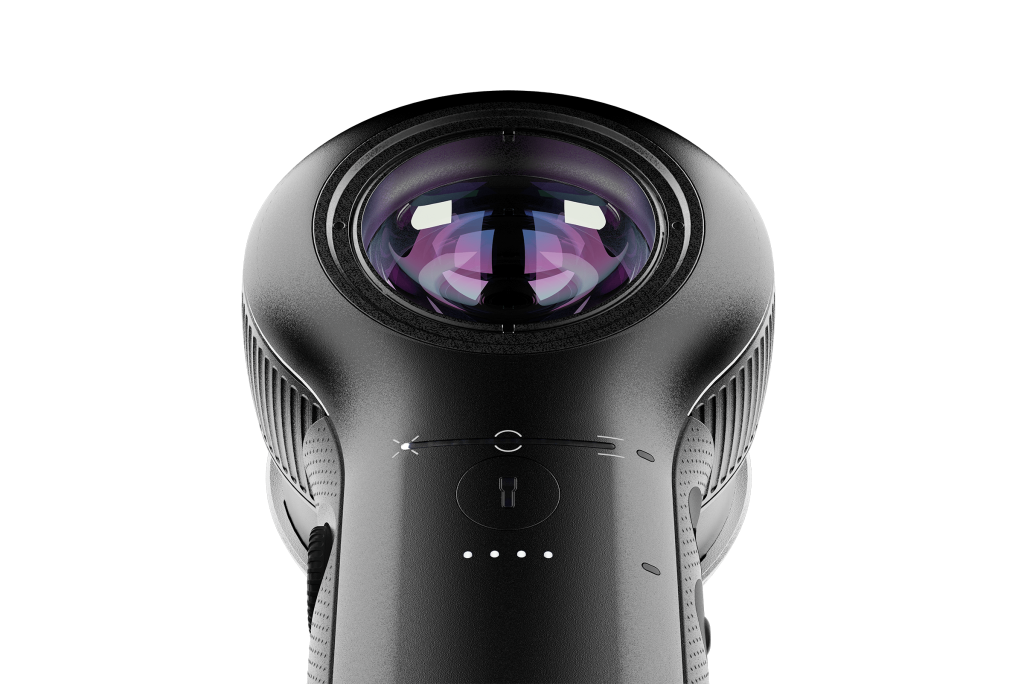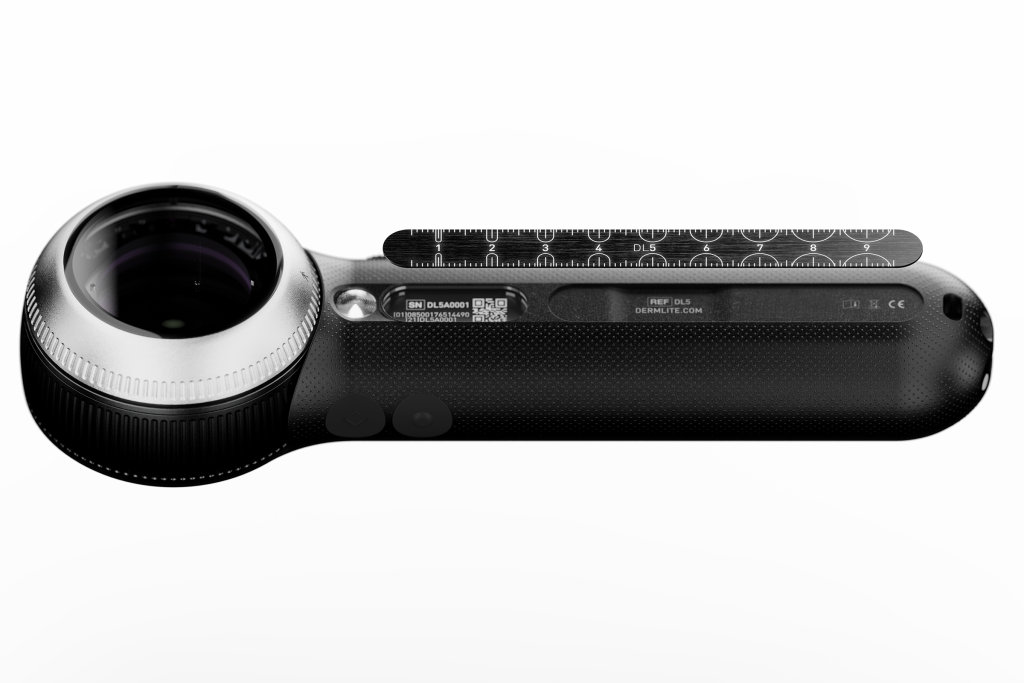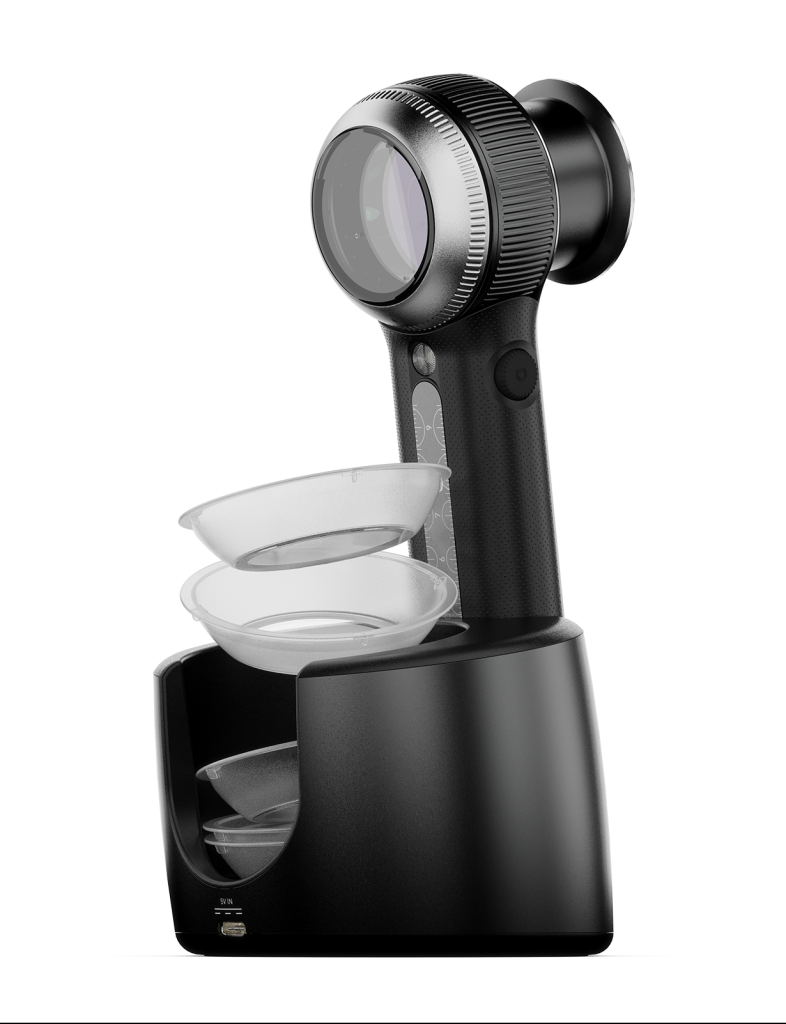The writer was a very early adopter of the DermLite DL3, having purchased one of the very first models to reach New Zealand. The ability to toggle between polarised and non-polarised dermoscopy a significant advance and most useful, as discussed in an earlier article.
When DermLite introduced the DL4, the writer wasn’t convinced, deciding to stick with the DL3, purchasing a later model when the switch on the first one wore out. The main added feature was “pigment boost”, a set of orange LEDs which highlighted pigment.
DermLite have now introduced the DL5, with numerous enhancements and new features. In order of usefulness (my opinion), these are:
- A wider field of view. The faceplate of the DL3 is 30mm diameter, the DL5 is 40mm. For most areas of the body, this is a big plus, especially when examining larger lesions such as widespread lentigo maligna. The downside is a slightly greater difficulty with contact dermoscopy on concavities. However, the DL5 has a bright torch incorporated for non-contact examination of such lesions, and there is a 10mm small contact plate available as an optional extra.
- Battery level indicator. 4 tiny LEDs provide an indication of the amount of charge remaining. They fluctuate in brightness when the battery is being charged. This is a useful feature, avoiding the embarrassment when the DL3 runs out of power half-way through a skin check. The DL5 battery is about twice the capacity of that of the DL3.
- An improved on-off button compared to the DL3. This button also controls the polarisation mode.
- Variable brightness. There are 9 different brightness settings, and the device remembers the setting when it is switched off and back on again.
- Variable polarisation. In addition to being able to toggle between polarised and non-polarised settings (same as the DL3), there are 9 different settings, from polarised, through non-polarised to parallel polarisation. The last enhances the view of very superficial structures and requires contact fluid.
- A dermoscopic UV setting, providing a 10X magnified view of structures which fluoresce. This has the potential to replace the Wood’s light.
- A torch as mentioned above.
- Pigment boost, same as the DL4.
Using the DL5
It seemed slightly heavier than the DL3, but it was immediately noticeable that the handle was more comfortable and, for right-handers, the on-off/polarisation button was easier to operate. The optics seemed just a fraction clearer, and the wider field of view improved the process. The parallel-polarisation setting appeared to reduce background pigmentation and enhance the visibility of surface vessels. Using it on the second brightest setting seemed to be best. There was not the opportunity to use the UV function.
The downside
For right handers, using the main button is easy and comfortable, using the thumb. However, for left-handers, it is awkward. It is necessary to bend the index finger, altering the grip. Perhaps a left-handed model, with the buttons reversed, would be a good idea.
The bottom line
At approximately $1000 more expensive than the DL3, the question is, “Is it worth the extra cost?” For the experienced dermoscopist, full-time skin cancer doctor or dermatologist, I think the answer is yes; it is a worthwhile investment. If I was replacing my DL3, I would certainly purchase a DL5 rather than another DL3, even though I am left-handed (I rapidly adapted to using it in my right hand on my test subject, in the same way I did with a mouse).
Declaration
The demo model was provided by Macquarie Medical. The writer has no financial association with either Macquarie or DermLite.
Dr K Monnington



For further information on the DermLite DL5 please click here
